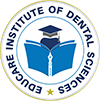Orthodontics, a specialized branch of dentistry, plays a pivotal role in improving oral health, enhancing aesthetic appeal, and boosting self-confidence. This dental specialty is dedicated to diagnosing, preventing, and treating dental and facial irregularities, or malocclusion, which means “bad bite.” Whether it’s crooked, overlapped, twisted teeth, or gaps between them, orthodontics offers a solution tailored to each individual’s needs. In this post, we’ll dive into the world of orthodontics, exploring common treatments such as traditional braces, clear aligners, and removable retainers, and uncovering the impact these interventions can have on your oral health and overall well-being.
Understanding the Need for Orthodontic Treatment
Orthodontic issues can arise due to various factors, including genetics, early loss of baby or adult teeth, improper fit of dental restorations, gum disease, or persistent habits such as thumb-sucking during childhood. Regardless of the cause, misaligned teeth can lead to a host of oral health issues, including difficulty in cleaning, increased risk of tooth decay and gum disease, and excessive wear on tooth surfaces. Moreover, a misaligned bite can cause problems with chewing, leading to headaches, TMJ disorders, and neck, shoulder, and back pain.
Recognizing the signs early and consulting with an orthodontist can prevent these complications and lead to a healthier, more comfortable, and more confident life.
Common Orthodontic Treatments
Traditional Braces
For decades, traditional braces have been the cornerstone of orthodontic treatment. They consist of metal brackets bonded to the teeth, connected by wires and tiny rubber bands or elastics. Over time, braces apply continuous pressure on the teeth, gradually moving them into the desired position. Despite their visibility, traditional braces are highly effective for correcting complex bite and alignment issues.
Clear Aligners
In recent years, clear aligners like Invisalign have surged in popularity, offering a less noticeable and more aesthetic alternative to metal braces. These custom-made, transparent plastic trays fit snugly over the teeth, gently moving them over time. Clear aligners are removable, making eating, brushing, and flossing easier, but they require a high level of commitment to wear them as directed.
Removable Retainers
After the active phase of orthodontic treatment, whether it was with braces or aligners, removable retainers are often used to maintain the teeth in their new position. Retainers are crucial for preventing teeth from gradually shifting back towards their original position, a process known as relapse. They can be made of clear plastic or a combination of plastic and metal, and they are typically worn according to the orthodontist’s instructions, possibly decreasing in use over time.
The Impact of Orthodontic Treatment
The benefits of orthodontic treatment extend far beyond the obvious cosmetic improvements. Properly aligned teeth are easier to clean, reducing the risk of cavities and gum disease. A correct bite ensures that chewing functions are optimized, which can alleviate or prevent discomfort and pain associated with TMJ disorders. Additionally, the psychological and emotional benefits of a confident smile cannot be understated, often leading to improved self-esteem and quality of life.
Orthodontics offers a gateway to improved oral health, functionality, and self-confidence. With advancements in dental technology and treatment options, achieving a healthy, beautiful smile is more accessible than ever. If you recognize the need for orthodontic treatment in yourself or a loved one, consulting with an experienced orthodontist is the first step toward a lifetime of smiles. Remember, it’s never too late to align your smile and enhance your life.
